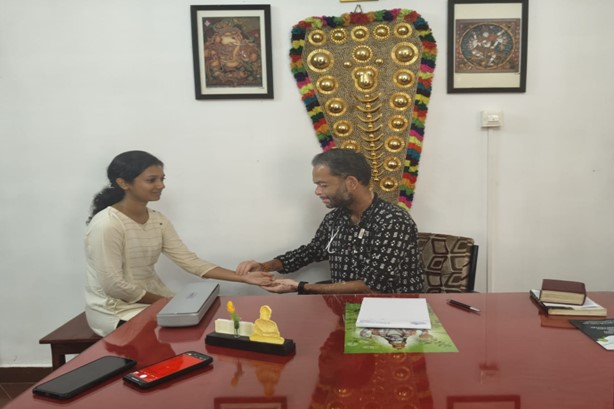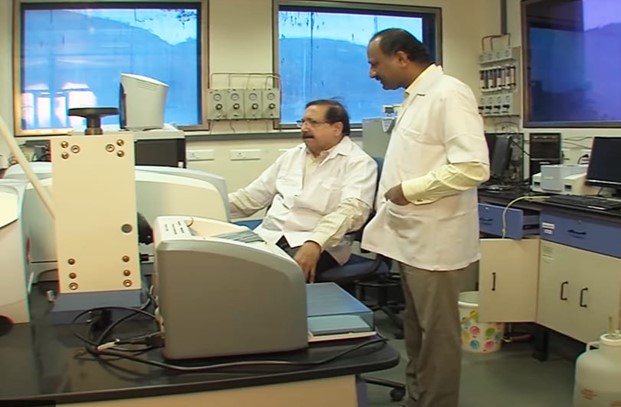The Scope of Ayurveda Oncology
V Sujatha, Skanthesh Lakshmanan, Vinayak Padikkal, Taniya Gupta03/21/2024 | Report-backs
The Forum for Medical Pluralism, India comprises a group of Ayurveda, Siddha and Unani (ASU) and biomedical professionals, social scientists, and public health experts. The global discourse on diseases and treatment is dominated by the positivistic approach of biomedicine, leaving little room for dialogue with other medical epistemes of the body. The forum seeks to build a knowledge-based network in health and medicine that goes beyond the historically and geopolitically determined epistemology of biomedicine. Consisting of a team of experts from various specialities, the Forum serves as a platform for sharing valid clinical expertise of ASU systems of medicine and subjecting them to critical examination by experts.
On December 25, 2023, the Forum held an online discussion on, ‘The Scope of Ayurveda Oncology: Expertise and Experience Sharing’. In this session, Ayurvedic physician, Dr. Rajagopal Krishnan, presented his clinical case studies to treat what is known as cancer today. Dr. Aditya Shivhare served as the discussant, and the session was chaired by Dr. Avinash Kadam.

Dr. Rajagopal Krishnan in his clinic [Source: Authors]
In the session, Dr. Rajagopal Krishnan focused on explaining foundational Ayurvedic principles and providing insights into the Ayurvedic pathology of cancer, along with treatment protocols. The foundational ayurvedic principle of Paramanu Siddhantha1, as mentioned in Charaka Samhita2, attributes the responsibility for health and illness to paramanu (akin to the smallest unit of matter, correlated to cells in the body) through mechanisms of samyoga (joining of paramanu) vibhaga (splitting up of paramanu). Vayu, karma, and swabhava influence paramanu, determining health outcomes. Vayu acts as the initiator for samyoga and vibhaga processes, working in conjunction with karma and swabhava. He elaborated on Karma, that encompasses daily activities and genetic predispositions stored as genetic memory, resembling purva janmakrita karma (previous birth karma) as mentioned in Ayurveda. Swabhava involves permanent traits inherited from parents and inherent individual traits. Ayurveda emphasizes the causative role of dietary habits, eating behavior, tobacco and alcohol consumption in disease etiology. Dr. Krishnan backed the scientific validity of the pathogenesis of extra growth in ayurveda (resembling cancer) with the latest genomics and epigenetics research. In genomic biology, studies by Dr. Walter Sinclair and Dr. Elizabeth Blackburn revealed the adverse effects of unhealthy eating habits on telomere damage, aging from glycation, DNA methylation, DNA damage, and other epigenetic changes leading to disease development.
Dr. Krishnan explained the pathology of cancer which resembles the formation of Arbuda (major neoplasm) in the canonical Ayurvedic texts, Charaka and Sushruta Samhitas3, where it is described as a swollen up, mass structure, which is round, muscular, slow-growing, deep-rooted and maybe found anywhere inside or outside the body. Arbuda is categorized based on a) aggravated dosas4. For example, vātārbuda5, pittārbuda6 and kaphārbuda7 b) dhatu8 involved i.e. medorbuda (fatty tissues), māmsārbuda (muscular tissues). Pathogenesis of an Arbuda follows the localized growth, its slow growth and its spread. Additionally, it may reappear either simultaneously or over time, at the same site after treatment (Adhyarbuda9) or emerge in a different location (Dvirarbuda10). In the Ayurvedic tradition, Dvirarbuda finds semblance to the biomedical understanding of the metastasis of cancers. It was highlighted that managing an Arbuda becomes particularly challenging when it appears in a vital organ or a vital channel (srotas), for example, Raktarbuda (correlated to leukemia).
The treatment of Arbuda necessitates a carefully calibrated protocol that includes Langhana11 (Fasting), Snehana12 (oleation), Svedana13 (sweating), and Panchakarma14 (purification procedures) along with pharmaceutical interventions. The application of Langhana involves ‘Fast Mimicking Diet’ plan whereas Snehana is linked to induced ketosis promoting ketone metabolism, and the importance of Padikaram15 in their treatments lies in reverting glucose metabolism. The discussion also described the impacts of Rasayana16 on facilitating the rebooting of stem cell function in patients post-fasting. The generic treatment of Arbuda in Ayurveda also involves surgical removal and the use of internal and external medications.

Rasayu Cancer Clinic, Pune [Source: Authors]
Ayurveda also addresses malignancies within the framework of systemic diseases like Gulma17 (hard mass in abdomen), Pandu18, Vata Raktha19, and complex Jvaram (fever), which can impact multiple systems during progression much like cancer or Arbuda. Apart from Arbuda, Ayurveda identifies uncontrolled growth of cells in certain other disease categories like Shotha20, Gulma, Dushtavrana21, Granthi22. Of these, only Arbuda and Granthi are associated with malignant growth of tumors.
Dr. Krishnan underscored the significance of practice-based evidence in treating cancer with Ayurveda. Among many cases that he shared, notably, a case study involved a 2-month-old infant diagnosed with Acute Monoblastic leukemia. Due to the inability to undergo chemotherapy and poor prognosis, the initial treatment aimed at palliation. However, the Ayurvedic approach concentrated on reducing inflammation, purifying blood tissue, and boosting immunity. The child responded positively, with blast cells decreasing significantly from 95% to 20% within the first month of treatment and achieving complete remission of cancer after 6 months. Now a healthy 10-year-old, this case stands as an exemplar for Ayurveda's potential in treating advanced-stage cancer.
Further, Dr. Kadam presented a noteworthy case of high-grade diffuse large B-cell lymphoma tumor regression using Ayurveda treatment, published in the Clinical Case Reports Journal. Despite limited funding and capacity in the Ayurveda research ecosystem, there is a consistent growth in studies and scientific evidence supporting the effectiveness of Ayurveda in cancer management.
It was emphasized that the primary objective of the Ayurvedic practitioners is to maintain the vitality, ojas23 (vigor) of the body, rather than to merely extract the tumor. The emphasis lies in providing a quality life and a dignified death, if inevitable. This underscores Ayurveda's aim to safeguard the patient's innate resilience and strength. In this context, Ayurveda can address the gap in the poor quality of life experienced by cancer patients, often marked by extreme pain and weakness at a much lower cost than biomedicine. The session highlighted the need for greater funding and research attention to the field of ayurvedic oncology.
Footnotes
1 Paramanu Siddhantha is the theory that explores the concept that matter can be broken down into extremely tiny particles, termed "paramanus," which are considered the fundamental building blocks off all the matter (English transliterations of Sanskrit terms are free transliterations by the authors without the use of diacritic).
2 Charaka Samhitha is one among three grand texts of Ayurveda.
3 Sushruta Samhitha is one among three grand texts of Ayurveda.
4 Dosha is the regulatory functional factors of the body formed by the synchronized interplay between the five basic elements within any living system. Three doshas are mentioned in Ayurveda, namely, vata; pitta; kapha. Vata governs all sensory perceptions, motor activities and higher cognitive activities. Its basic elements are air and space. Whereas, pitta regulates body temperature and metabolic activities, and its basic elements are fire and water. Lastly, kapha; made up of earth and water elements, is responsible for the cohesiveness, stability, immunity, and lubrication of the body.
5 Occurrence of Arbuda due to vitiated vata.
6 Occurrence of Arbuda due to vitiated pitta.
7 Occurrence of Arbuda due to vitiated kapha
8 Dhatu denotes the seven fundamental structure of the body, roughly understood as tissue. Rasa,rakta, mamsa, meda, asthi, majja and sukhra are seven dhatus.
9 Development of new tumor at the site of an existing one.
10 Development of multiple tumors over time or simultaneously, either at the same site or different locations.
11 Langhana translates as therapeutic fasting. It is one of the six treatment modalities prescribed in Ayurveda wherein the procedure induces lightness in the body through fasting.
12 One of the basic treatments of Ayurveda involves the administration of oils or fats both internally and externally.
13 Svedana or Svedanam is one of the eight stages of the mercury purification treatment. Svedanam induces sweating in the body through the sudation of a specific amount of mercury.
14 A cleansing therapy in Ayurveda which cleanses the vitiated dosa through emesis, purgation, decoction enema, unctuous enema and errhine.
15 Padikaram is a kind of alum that serves dual roles in domestic and medicinal applications. In Siddha medicine it is considered as one of the karsaram used as styptic, antiseptic, and astringent.
16 An ayurvedic rejuvenating therapy used to improve immunity, health and longevity.
17 Gulma is defined as large palpable, rounded, intra- abdominal swellings between hridaya (cardiac region) and the basti (bladder) regions, which develop due to aggravated vata. It may be situated either superficially or deep inside Thoraco-abdominal cavity.
18 The term 'Pandu' refers to a pale or yellowish-white hue. Panduroga, or anemia, is a condition wherein an individual becomes pale due to a shortage of rakta dhatu (blood) in the body.
19 An illness in which both vata and rakta are aggravated by distinct aetiological factors. In biomedicine understanding it is understood as a common metabolic disorder. This ailment is marked by intense pain, sensitivity, inflammation, and a burning sensation experienced in the joints that are affected.
20 Shotha translates as swelling or oedema, characterized by a feeling of heaviness, swelling, swelling between tvak and mamsa.
21 A chronic ulcer caused by external injury or trauma or aggravated doshas, found anywhere in the body.
22 A medical condition marked by elevated swellings, knotted swelling, and rounded protrusions. According to the Charaka Samhitā, it is noted that a granthi or tumor is encapsulated, and the removal of both the capsule and the tumor is emphasized.
23 Ojas is the essence of seven fundamental structural components. It is vital for life, provides strength and resistance to disease and supports mental function of the body.
About the authors:
V Sujatha is professor of sociology at the Centre for Social Systems, Jawaharlal Nehru University, New Delhi, India.
Skanthesh Lakshmanan is an Ayurveda physician and Researcher at PPHSF, Bangalore, India.
Vinayak Padikkal is a public health expert trained in Ayush, serves as the Founder and Managing Trustee of the Centre for Advanced Studies Integrated Research in Ayurveda (CASIRA).
Taniya Gupta is a PhD Scholar at the Centre for Social Systems, Jawaharlal Nehru University, New Delhi, India.
Published: 03/20/2024
